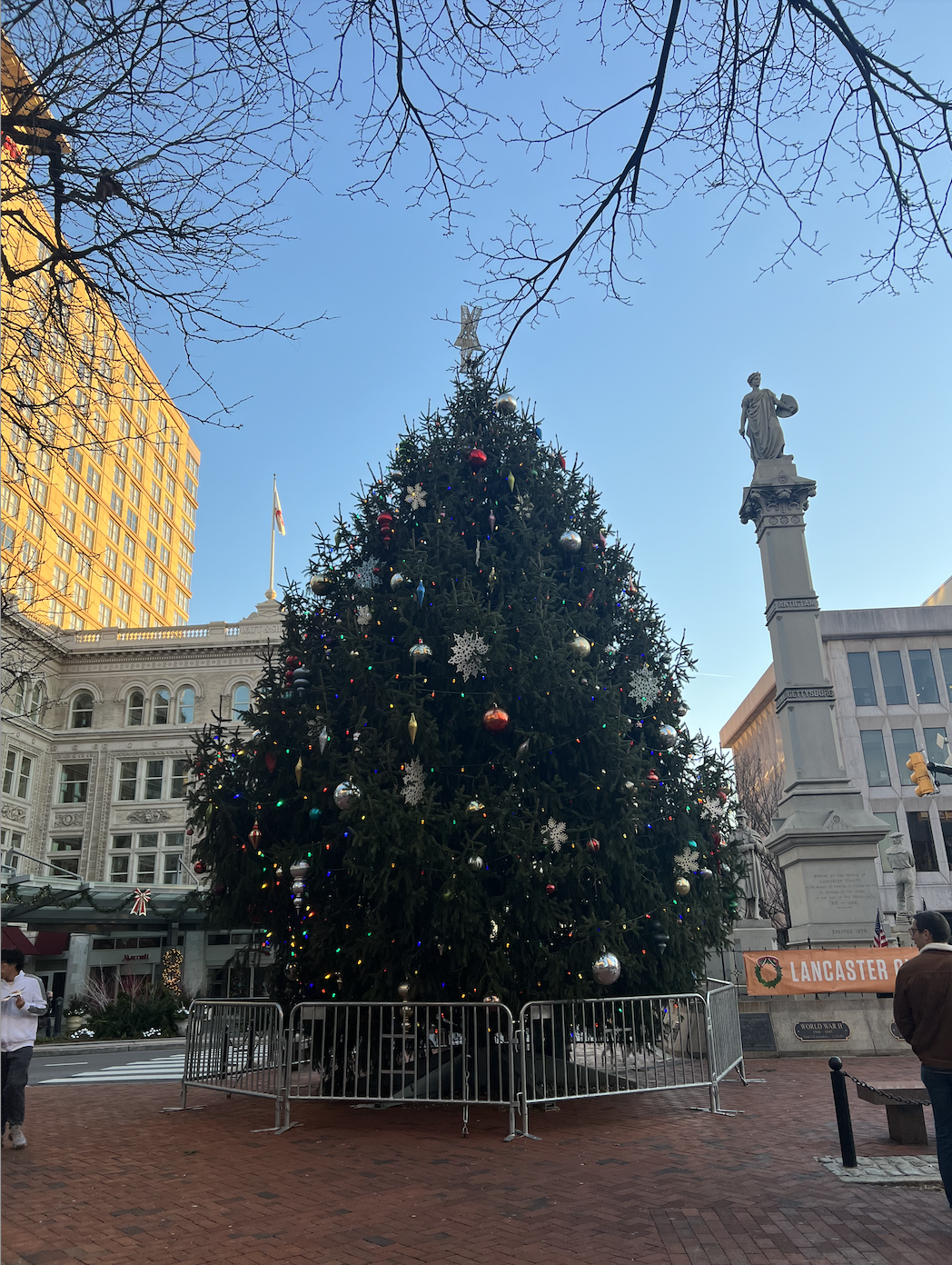Photo Courtesy of Anna Chiaradonna
If you have time to explore downtown Lancaster during the holiday season, you will find a 40-foot tree with dazzling lights in Penn Square, and storefronts such as Madcap & Co. on Queen Street decked to the nines with bright-blue trees, a life-size Grinch sticker, and Taylor Swift themed ornaments. For many Americans, that is what is expected: a Christmas filled with the voice of Bing Crosby, the sweet smell of pine needles, and rolls of brightly colored wrapping paper. For the over 30,000 Amish residents of Lancaster County, however, the birth of Christ is commemorated in a much more simplistic manner.
A community with roots in Lancaster since the 1720s, the Amish do not typically partake in the “traditional” customs of North American Christmas. If entering an Amish household during the holiday season, you will not find Christmas trees, strings of lights, letters to Santa Claus, or bundles of gifts. Amish communities generally believe that extravagant decorations detract from the story of Christmas. Instead, they utilize the holiday season to reflect on their biblical values and celebrate familial ties.
What you will find, however, are candles, angel statues, and natural greenery decorations such as wreaths. For presents, children usually receive gifts such as books, dolls, wooden toys, baseball bats, and baseball gloves. Amish men and women will likely receive practical gifts for work on the farm or at home.
Amish schoolchildren hold Christmas programs in a one-room schoolhouse where they sing, read poems, and perform skits focused on the story of Christ’s birth and the joys of gift-giving. During this time, homemade gifts are also exchanged between children and teachers.
Christmas card-making is also a popular tradition; children and adults make homemade, “stamped” cards that they exchange with one another. Many families will tie cards onto a string and hang them in the living room, much like decorating the Christmas tree, while others may accompany their cards with delightful gift hampers to spread joy and warmth during the festive season.
The typical Christmas dinner consists of turkey, mashed potatoes, gravy, fruits, and a cream cheese pudding layered with gelatin. Desserts include delicacies such as molasses cookies, shoofly pie, and sand tarts.
After the festivities of Christmas Day, many Amish celebrate Second Christmas, or what they call Zwedde Grischtdaag in Pennsylvania Dutch. This is another day, or several, to exchange gifts and visit with extended family and friends who may not have celebrated with them on the 25th. Second Christmas can last well into January and February if the family has a large circle of extended family and friends. Some Amish families may also celebrate Old Christmas on January 6th, a relic of the Julian calendar and the traditional date of the Three Wise Men visiting Bethlehem to find the baby Jesus. Unlike the jovial December 25th, Old Christmas is typically more somber and begins with fasting, followed by another Christmas dinner in the late afternoon.
Although different in various ways, Christmas traditions across cultures are tied together through the shared appreciation of faith and family.
Sophomore Anna Chiaradonna is the Editor-In-Chief of The College Reporter. Her email is achiarad@fandm.edu.
